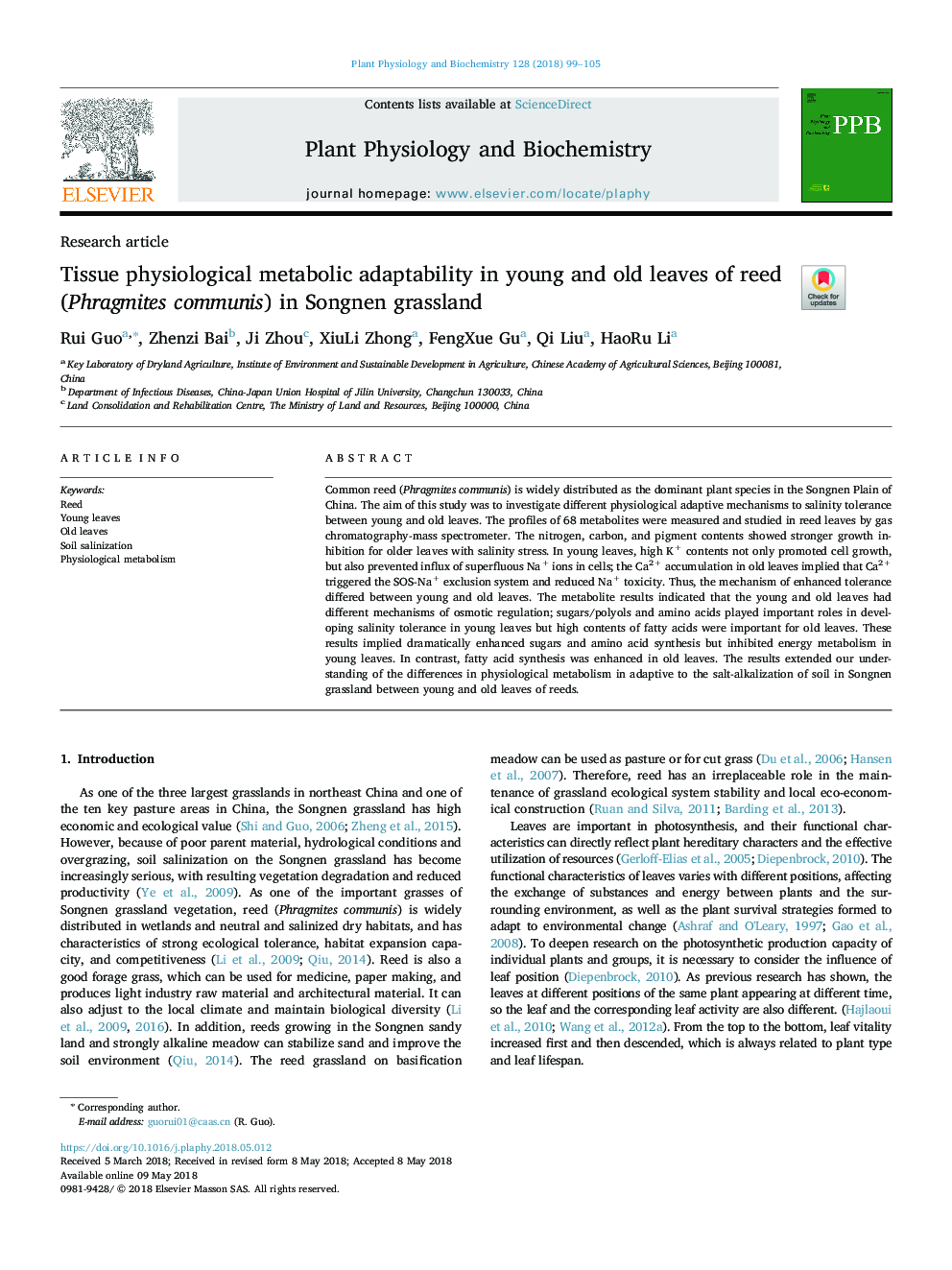| Article ID | Journal | Published Year | Pages | File Type |
|---|---|---|---|---|
| 8352887 | Plant Physiology and Biochemistry | 2018 | 7 Pages |
Abstract
Common reed (Phragmites communis) is widely distributed as the dominant plant species in the Songnen Plain of China. The aim of this study was to investigate different physiological adaptive mechanisms to salinity tolerance between young and old leaves. The profiles of 68 metabolites were measured and studied in reed leaves by gas chromatography-mass spectrometer. The nitrogen, carbon, and pigment contents showed stronger growth inhibition for older leaves with salinity stress. In young leaves, high K+ contents not only promoted cell growth, but also prevented influx of superfluous Na+ ions in cells; the Ca2+ accumulation in old leaves implied that Ca2+ triggered the SOS-Na+ exclusion system and reduced Na+ toxicity. Thus, the mechanism of enhanced tolerance differed between young and old leaves. The metabolite results indicated that the young and old leaves had different mechanisms of osmotic regulation; sugars/polyols and amino acids played important roles in developing salinity tolerance in young leaves but high contents of fatty acids were important for old leaves. These results implied dramatically enhanced sugars and amino acid synthesis but inhibited energy metabolism in young leaves. In contrast, fatty acid synthesis was enhanced in old leaves. The results extended our understanding of the differences in physiological metabolism in adaptive to the salt-alkalization of soil in Songnen grassland between young and old leaves of reeds.
Keywords
Related Topics
Life Sciences
Agricultural and Biological Sciences
Plant Science
Authors
Rui Guo, Zhenzi Bai, Ji Zhou, XiuLi Zhong, FengXue Gu, Qi Liu, HaoRu Li,
